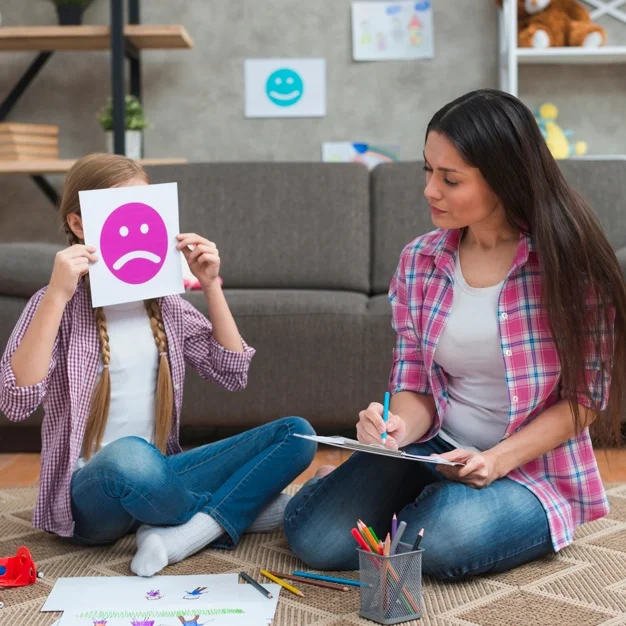

We have a database of over 11,000 colleges all over India.
Connect with us to find your perfect fit!
Blog
12 November,2021 | By Brainwonders

Every area has been affected by modernisation, and medical research is no exception. The way individuals are checked, diagnosed, and treated has advanced significantly, and it continues to improve and become more successful every day. Without a doubt, disorders and diseases have begun to reveal weird aspects and sorts, but the ever-evolving therapeutic procedures have always come to our rescue. Art therapy is one such approach that has recently gained a lot of popularity.
Throughout history, art has been a means of communication, self-expression, group engagement, diagnosis, and conflict resolution. Sacred paintings and symbols, as well as carved idols and charms, have been used in the healing process by civilizations and faiths all over the world for thousands of years. Adrian Hill, a British artist who found the therapeutic advantages of painting and sketching while recuperating from illness, invented "art therapy" in 1942. Art therapy was recently established as a distinct and widely acknowledged therapy, in the mid-twentieth century.
Art therapy is a discipline that blends art and psychology to assist individuals in treatment to develop self-awareness, explore emotions, resolve unresolved emotional issues, enhance social skills, and boost self-esteem through the creative process, therapeutic works, and third-party artwork. Art therapy is commonly used to assist people who face emotional or psychological difficulties in achieving personal well-being and enhanced function.
Know More About: 10 Surprising Things About Career Coaching as a Profession
The process of catharsis is aided by art therapy. During difficult moments, we sometimes find ourselves unable to express our thoughts and sentiments. These emotions and feelings are thus imprisoned within us and seek methods to escape. There are various healthy and destructive methods to express our emotions. You may frequently observe persons who overreact to little concerns or who run away from severe situations. These unspoken emotions have an impact on our bodies too. Many medical conditions, such as heart disease and ulcers, can be caused by a lot of stress. As a result, it's essential to express these emotions healthily.
Art therapy allows us to express ourselves healthily. The emotions and feelings are tough to explain in words, but they are simple to express with colours. It causes no harm to anyone, and only you are aware of the genuine purpose of your work.
People of all ages have benefited from art therapy. Art therapy has been shown to increase communication and focus, as well as lessen feelings of loneliness, according to research. is said to be especially beneficial for those who are out of touch with their emotions or sentiments since it allows people to communicate feelings on any subject via creative activity rather than talking. Art therapy may be especially helpful for people who have trouble talking about or recalling terrible situations. Because art is a form of nonverbal communication, it facilitates the expression of both unconscious and conscious thoughts and feelings, which is the underlying intervention rationale. The act of making art is seen to be therapeutic in and of itself.
Recommended: Understand How to prepare for the competitive exam aptitude tests?
Professionals that are trained in both art and therapy are known as art therapists. They are well-versed in human development, psychological theories, therapeutic practise, spiritual, multicultural, and creative traditions, as well as art's therapeutic potential. They employ art in therapy, evaluation, and research, as well as providing associated professionals with consultations. Individuals, couples, families, groups, and communities are all served by art therapists. They work in a variety of contexts, including mental health, rehabilitation, medical, and forensic facilities, community outreach programmes, wellness centres, schools, nursing homes, corporate structures, and open spaces.
Art therapy sessions are frequently held in large groups, with participants being given all painting supplies, including a canvas, a board, a pencil, colours, and everything else they might need to express themselves creatively. Individuals may, however, be treated differently based on the circumstances.
Art therapy may assist people of all ages, including toddlers, teenagers, and adults, and it requires no creative aptitude or unique talent to participate. According to several studies, even being in the presence of art can help to improve mental health. Whereas an art class focuses on teaching a skill or producing a certain result, art therapy focuses on allowing clients to focus on their inner experience.
In trials, art therapy was shown to significantly alleviate trauma symptoms and depression levels in those who had experienced trauma. According to one evaluation of the effectiveness of art therapy, it improved the quality of life and eased a range of psychological symptoms in cancer patients receiving medical treatment. Art therapy was reported to alleviate sadness and boost self-esteem in nursing home residents in one research.
Recommended: What Should A Fresher's Career Objective Be?
A person who enjoys painting or performing art and has a strong interest in medicine, particularly the psychiatric branch, should seriously consider entering this field. It has already begun to demonstrate its global reach in several nations. To summarise, art therapy has given us a healthy way to deal with our daily life. There will be a lot of worry and anxiety as the world becomes more globalised. In such circumstances, it is even more critical to look after not just your body but also your mental health.
Fill the form to know how!

